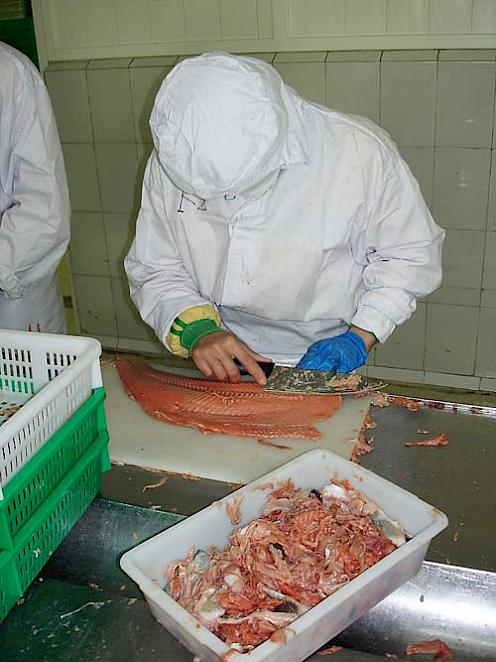
Trading tails
Salmons hanged for drying in the Russian Federation © Vladimir Filonov / WWF
i
- »
- Publications »
- Reports »
- Trading tails: Linkages between Russian salmon fisheries and East Asian markets
Published 13 November 2007
Russian Salmon figures don’t add up—TRAFFIC / WWF
Cambridge, UK, 13 November 2007—East Asian countries are importing between 50 and 90% more Russian Sockeye salmon than Russia is reporting as caught, according to a new report from TRAFFIC, the wildlife trade monitoring network, and WWF.
Trading tails: Linkages between Russian salmon fisheries and East Asian markets
Report author(s):
Shelley Clarke
Publication date:
November 2007
key findings
Analysis of data from officially published sources reveals that from 2003 to 2005, the estimated excess quantity of Russian Sockeye salmon entering East Asian markets was between 8,000 and 15,000 tonnes each year, worth USD 40 to76 million.
The Governments of Russia, Japan, China and South Korea need to tighten up on the Russian salmon trade to distinguish legal from illegal products in the market place and to protect salmon from overfishing
Craig Kirkpatrick, TRAFFIC’s East Asia Director
“The Russian Government’s records appear to under-estimate the true catch substantially.”
Possible reasons for the under-estimate include illegal catches or fishermen not reporting fully how much salmon they catch (two components of so-called Illegal, Unregulated and Unreported “IUU” fisheries), or flaws in the Government's reporting system itself.

The report uses mathematical modelling to estimate the discrepancies between the reported catch and import and market data.
“The traded amounts of between 150 and 190% of reported catches compare closely with previous estimates that IUU activities in the Russian Far East are 40–60% above the officially reported catch,” says Shelley Clarke, author of the report.
Japan is the world’s largest importer of salmon, and imports around half its frozen Sockeye supplies directly from Russia. China imports very little salmon for its domestic markets, but acts as a major low-cost salmon processing centre, most of it destined for Europe and the USA. Chinese buyers are often reluctant to make upfront cash payments to Russian parties, so buy their fish through brokers in South Korea, who offer low-cost bonded warehouse facilities which serve as duty-free storage areas.
“Almost all the salmon shipped into South Korea goes into bonded warehouses then is shipped out again without being recorded in customs statistics,” says Kirkpatrick.
“Clearly this increases the opportunities for document tampering and makes it more difficult to trace the origin and final destination of the salmon.”
The report recommends a package of measures to bring the Far East salmon fishery and its market under control. They include stricter government controls on ports and other customs borders; stopping the transfer of salmon cargoes between vessels at sea; better co-operation between Russia and East Asian port state control authorities to monitor all vessels operating in Russian waters and to share information on counterfeiting and other import documentation irregularities; more transparency in the use of bonded warehouse facilities; stepping up of random cargo inspections; and better labelling and traceability of salmon products.
“Governments and consumers are becoming increasingly concerned about the traceability of fish products. East Asian suppliers should make it clear where their stock comes from,” says Kirkpatrick, adding that product certification schemes, such as that operated by the Marine Stewardship Council would give suppliers a distinct commercial advantage.
USD40–76 million
worth of excess Russian Sockeye salmon entered Asian markets between 2003–2005
Russian records
have substantially under-estimated the true catch figures
Japan
remains the world/'s largest importer of salmon
for more information:
Media Team
+447921309716
Related News and Reports
featured in: Asia & Middle East Marine Trade Monitoring Sustainability & Development



